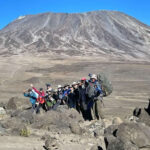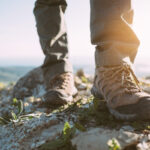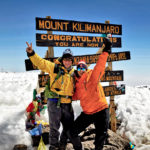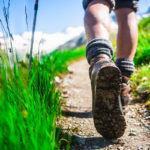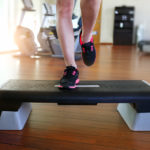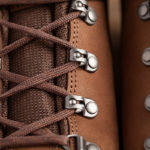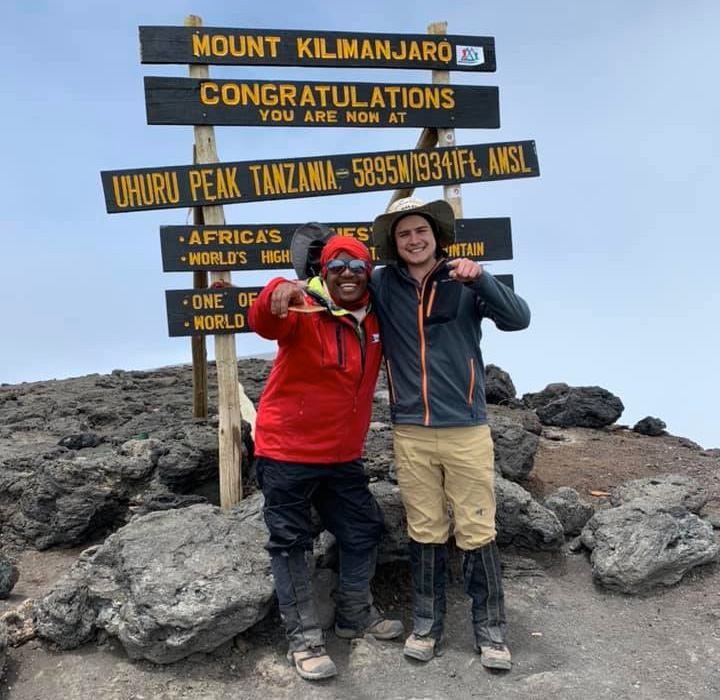
My name is John King. I’m one of Thomson Safaris’ staffers, and I recently summited Kilimanjaro on the Western Approach route.
I’m a novice mountaineer, and I wrote about my Kilimanjaro preparation just before my adventure. Now, I’d like to share a few things I learned on the mountain.
1. Prepare for Dry Air and Dust
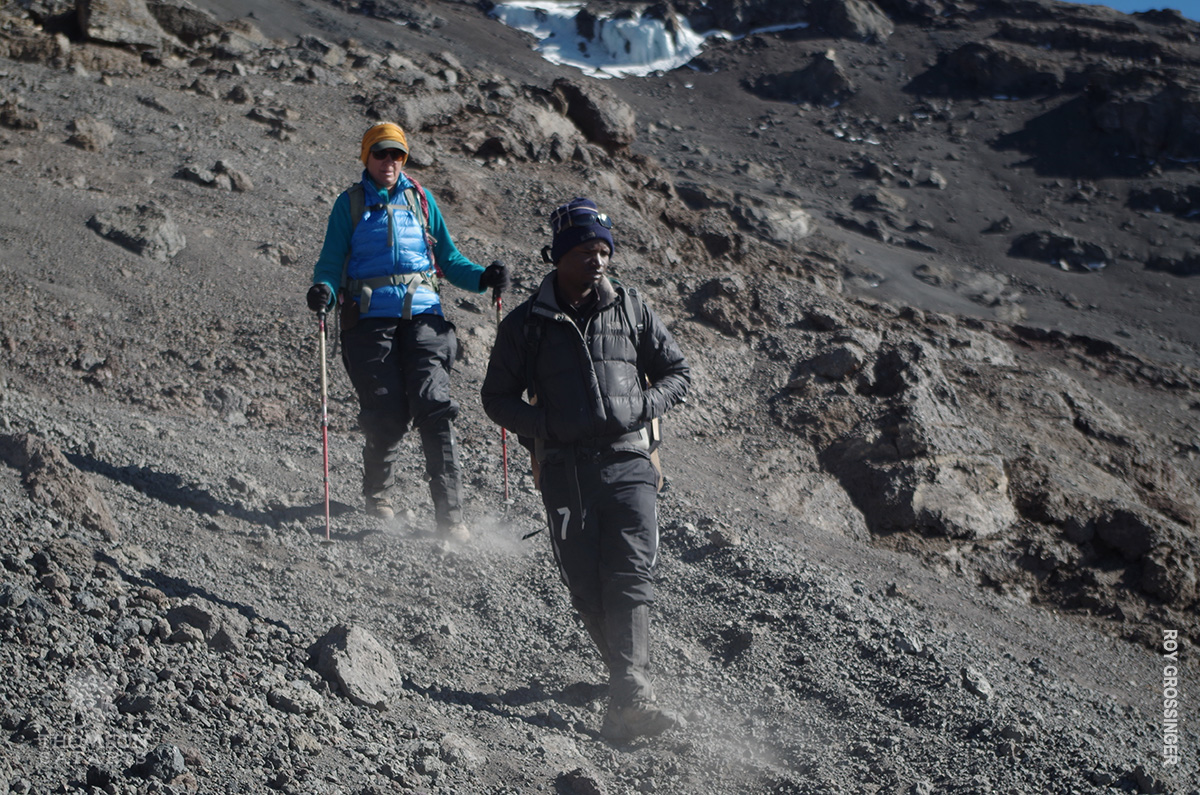
Everyone faces a different obstacle on Kilimanjaro. For some it’s headaches from the altitude, for others it’s fatigue and joint pain. My big obstacle was dry air and dust. The air has virtually no moisture past 12,000 feet. If you’re not careful, the dust and lack of humidity can do a number on your nose, throat and sinuses.
Bring a buff or neck gaiter to protect your face from dust. It will be critical during the descent, when you’ll “ski” through drifts of gravel and dust. A balaclava is not a substitute.
I would also bring a generous supply of throat lozenges. Don’t skimp on the hot beverages and soup at lunch and dinner either.
2. Put Tomorrow’s Clothing in Your Sleeping Bag
Changing into a warm pair of clothes made my mornings 100 percent more enjoyable. Tuck everything you plan to wear the next day into your sleeping bag with you. You’ll thank yourself when you don’t have to start the day by pulling on a freezing pair of pants at 15,000 feet.
3. A Reminder About Layering
I spoke with a friend who climbed Salkantay and another who did Everest base camp just before I left. Both described the same thing: the nights are freezing, and you’ll want to wear every article of clothing you have to bed.
I got lucky; the cold wasn’t excruciating on Kili when I was there. It often is, and I did sleep in multiple layers several different nights, but it could have been much colder.
This is another reminder that you need to prepare for a whole spectrum of weather and temperatures. On summit day, I slept in expedition weight base layers, a warm hat and a fleece. I threw on another heavier fleece, a down puffy jacket and fleece-lined pants in the morning, and by the time I got to the summit, I was down to just the light fleece because it was unusually warm.
Preparing for all those temperature ranges will help you trek and sleep comfortably.
4. Comfortable Warm Hats and Sun Hats are Worth Their Weight in Gold
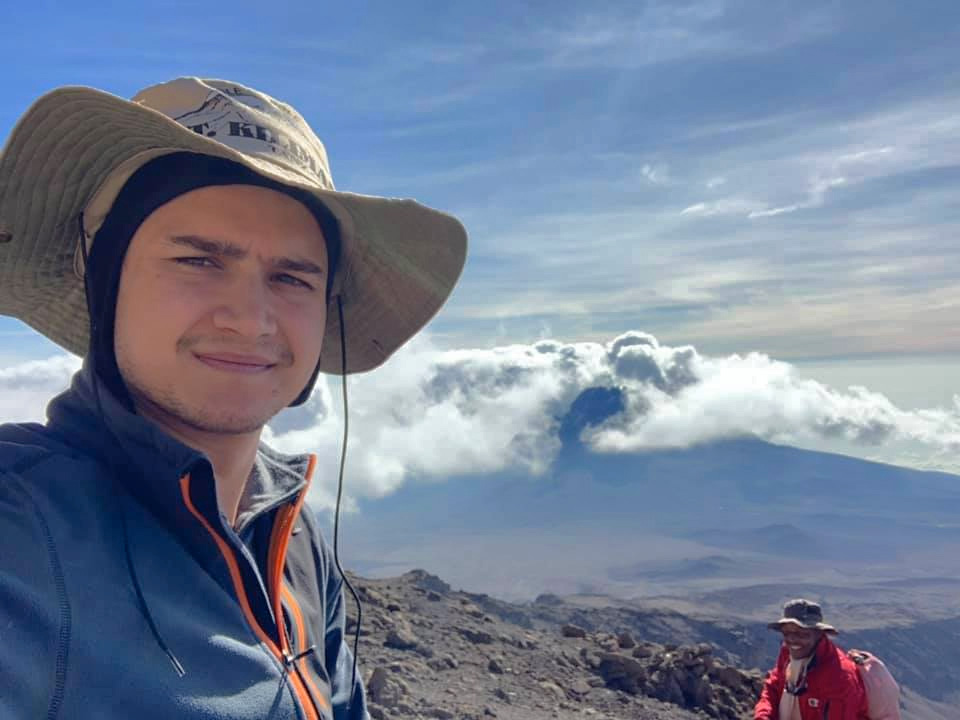
I wore a hat for most of my trek, even when I slept. Without one, you risk getting a headache from sun exposure or from cold gusts of wind penetrating your ears, which is a nightmare if you already have a headache from the altitude.
Find a lightweight warm hat that covers your ears and can fit under a sun hat – something you won’t mind sleeping in.
5. Drink Water in Slow Sips
Frequent sips of water will help you manage the effects of altitude – slow sips recommended. If you chug a half liter of water in one go, you’ll likely end up needing a rest stop a few minutes later, especially if you’re taking a diuretic altitude medication.
Slow sips will help you retain water and avoid the rest stops, which my guides charmingly called “going to look for monkeys.”
6. Gaiters are Non-negotiable
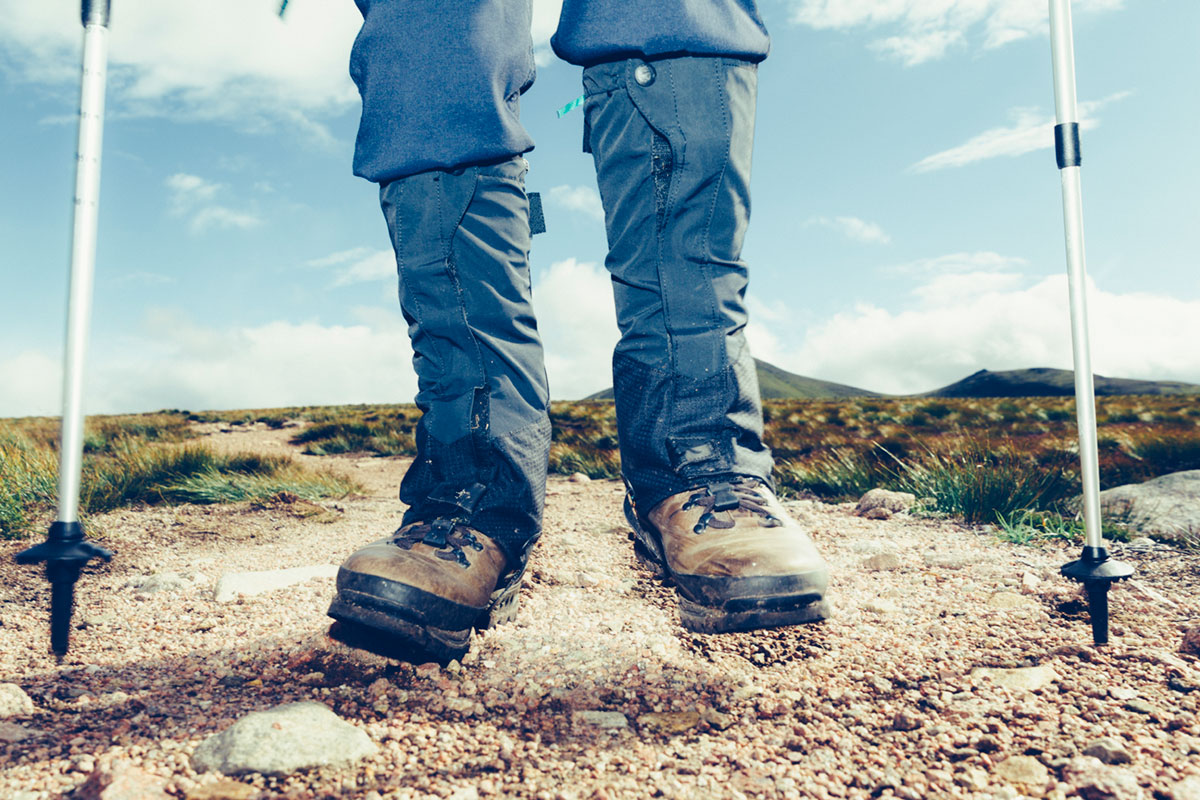 We get a few trekkers who call in and ask about what gaiters do and if they’re necessary. I’ll admit, I was a skeptic before I got to Kilimanjaro. I would never consider climbing without them now.
We get a few trekkers who call in and ask about what gaiters do and if they’re necessary. I’ll admit, I was a skeptic before I got to Kilimanjaro. I would never consider climbing without them now.
Gaiters go over the tops of your boots and your pants to protect against rocks and debris. They’re critical during the descent, when you’ll hike through drifts of dust and gravel. Get mid-calf or knee-high gaiters. I recommend a pair that uses Velcro.
7. Pack Extra Lip Balm, Batteries, Lozenges, Towelettes
Packing extras will save you a lot of stress.
- You’re going to use your headlamp a lot, and it’s crucial on summit day when you’ll start trekking either at midnight or around 4 a.m. Pack extra batteries.
- Lip balm and lozenges are a godsend on the higher, drier, colder parts of the mountain, so don’t skimp on backups.
- There are no showers or plumbing on Kili, so bring a generous supply of disposable wipes for the dust and restroom stops.
8. Single Accommodations are Incredibly Convenient
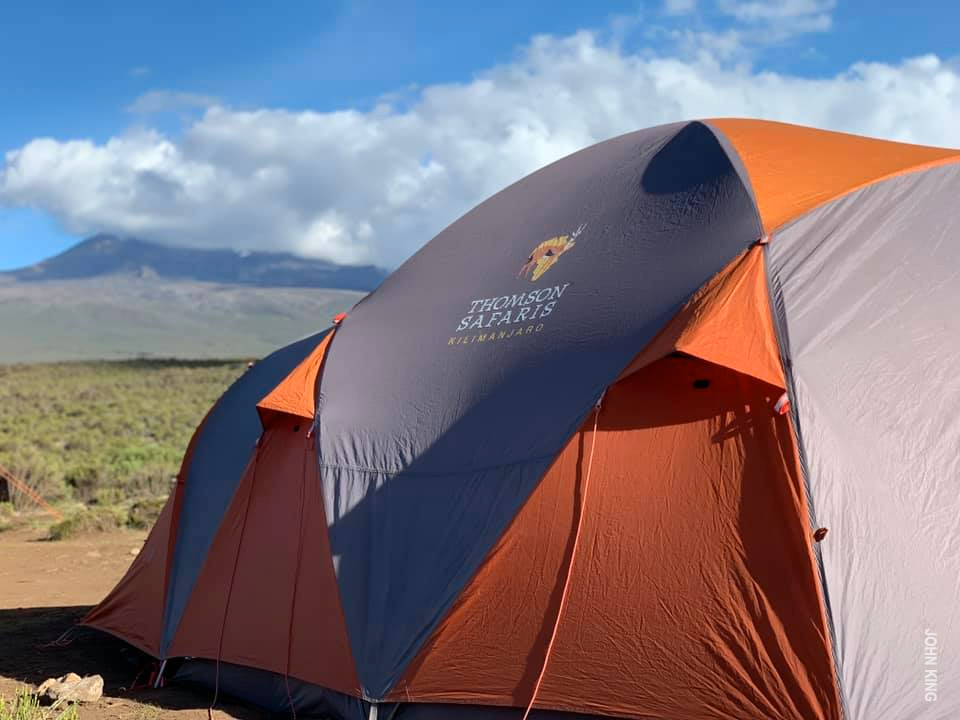
Trekkers regularly sleep two to a tent, but everyone on my trek paid a little extra to get the tent to themselves. If that sounds indulgent, consider this: your tent is the only private area you’ll have on the trip.
I changed, used my wash basin, organized my daypack each morning, napped and frequently woke up in the middle of the night to use the restroom, and I didn’t have to consider privacy or worry about disrupting someone else when I did so. When you’re roughing it for a week or more, that convenience goes a long way.
9. Positivity Will Carry You to the Summit
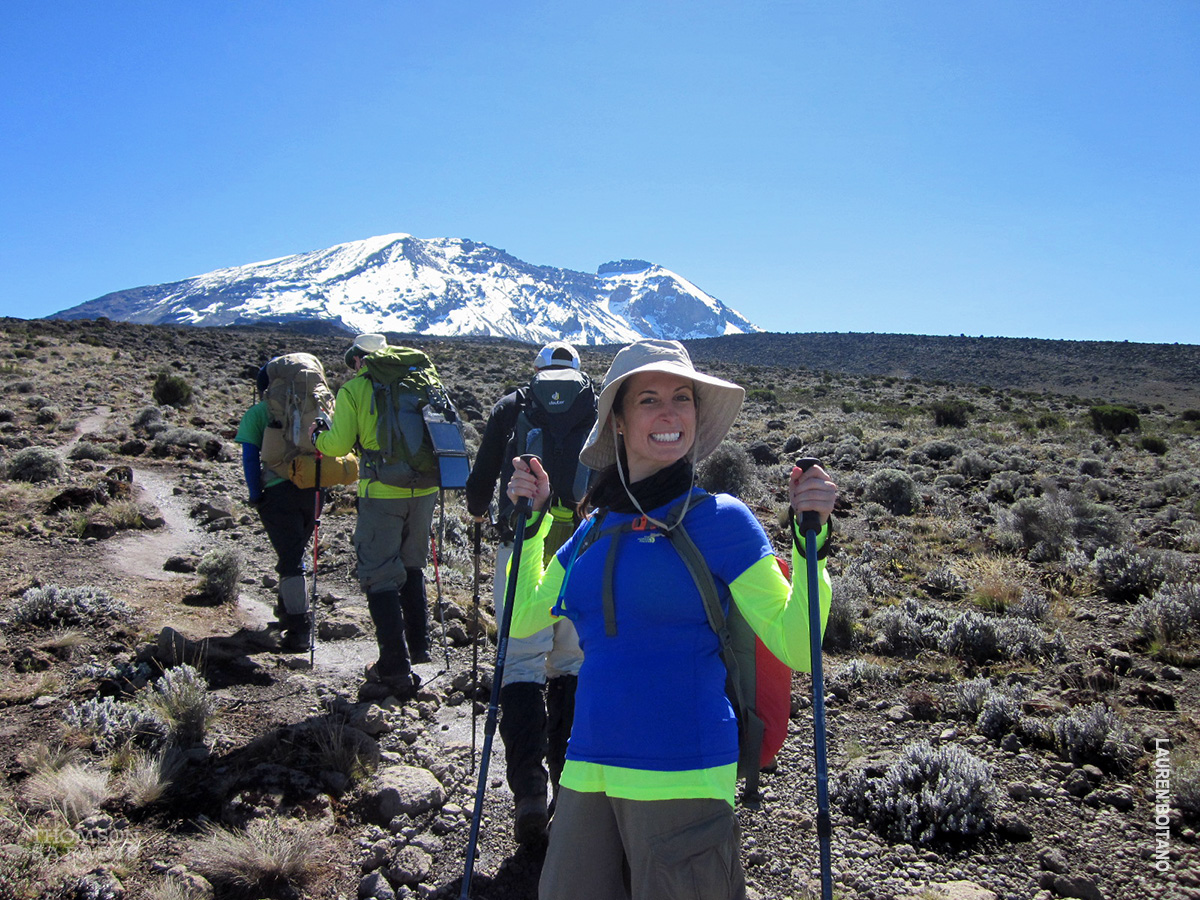
My guides frequently mentioned how important positivity was. They collect data on heart rate and blood oxygen level throughout the trek, but I got the impression general mood was a datapoint all its own.
At dinner before summit day, my head guide said, “I see smiles on your faces, and so I know each of you will make it to the summit, and our mission will be a success.” He was right.
This was a man who has summited Kilimanjaro over 200 times. He has seen who gets to the top and who doesn’t. Positivity is a key difference between the two.
And a Few Fun Things…
10. Make a Playlist, Download Some Podcasts or Audiobooks
When I had downtime in my tent or had trouble falling asleep, I turned to a long playlist of music and a library of podcasts. It was the perfect way to drown out some of the camp commotion and unwind.
I also had a whole playlist devoted to inspiring me during the intense portions of the trek. It was surprising how much it helped.
11. Here’s Where You Might Get Cellphone Service
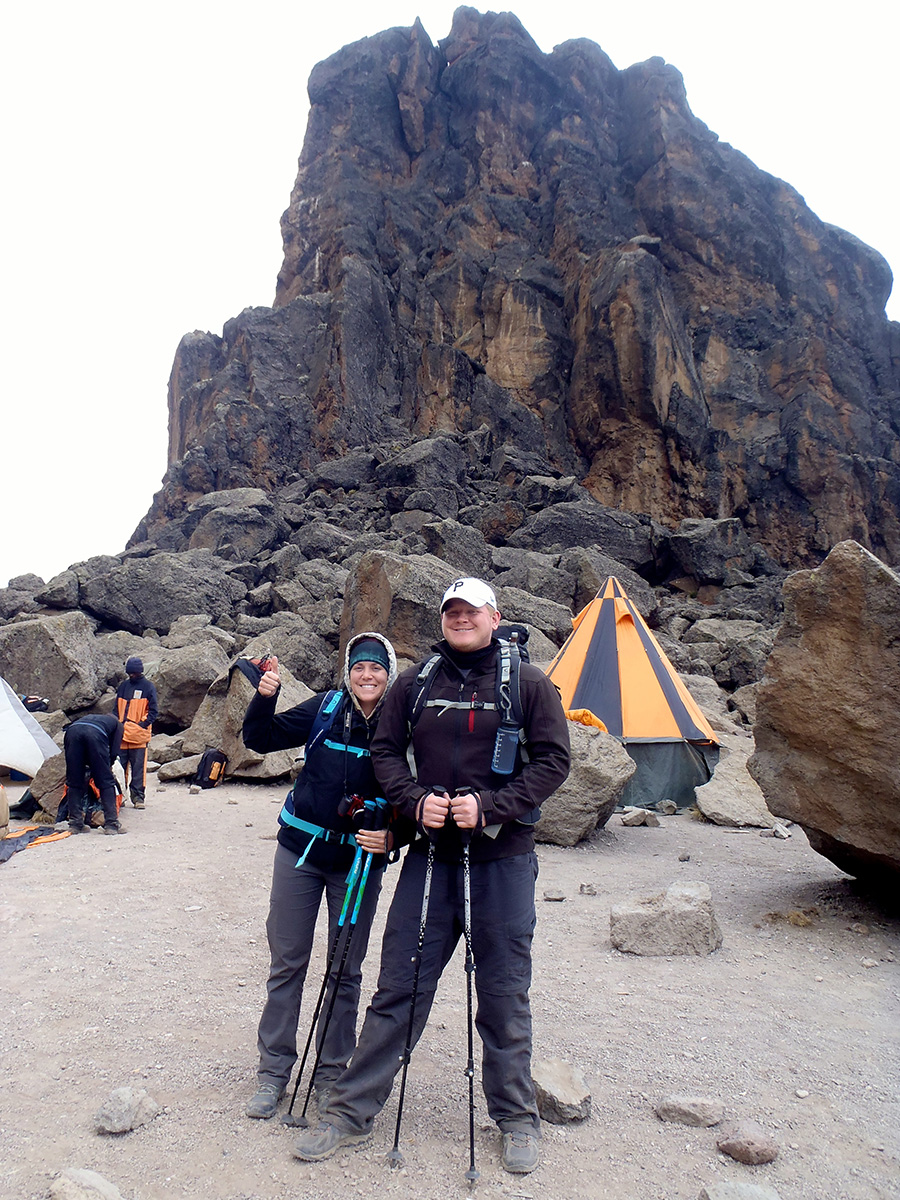
Downloading those playlists beforehand is important because there’s virtually no service on the mountain – certainly not enough to download anything substantial.
Personally, I had my phone on airplane mode the whole trek, which I preferred. If you want to communicate with a loved one, though, you might have some luck at “the magic rock” at Lava Tower and Barafu. This is where porters and guides get reception and call their families. Just know that results vary.
12. Get Out of Your Tent and Take in the Sights
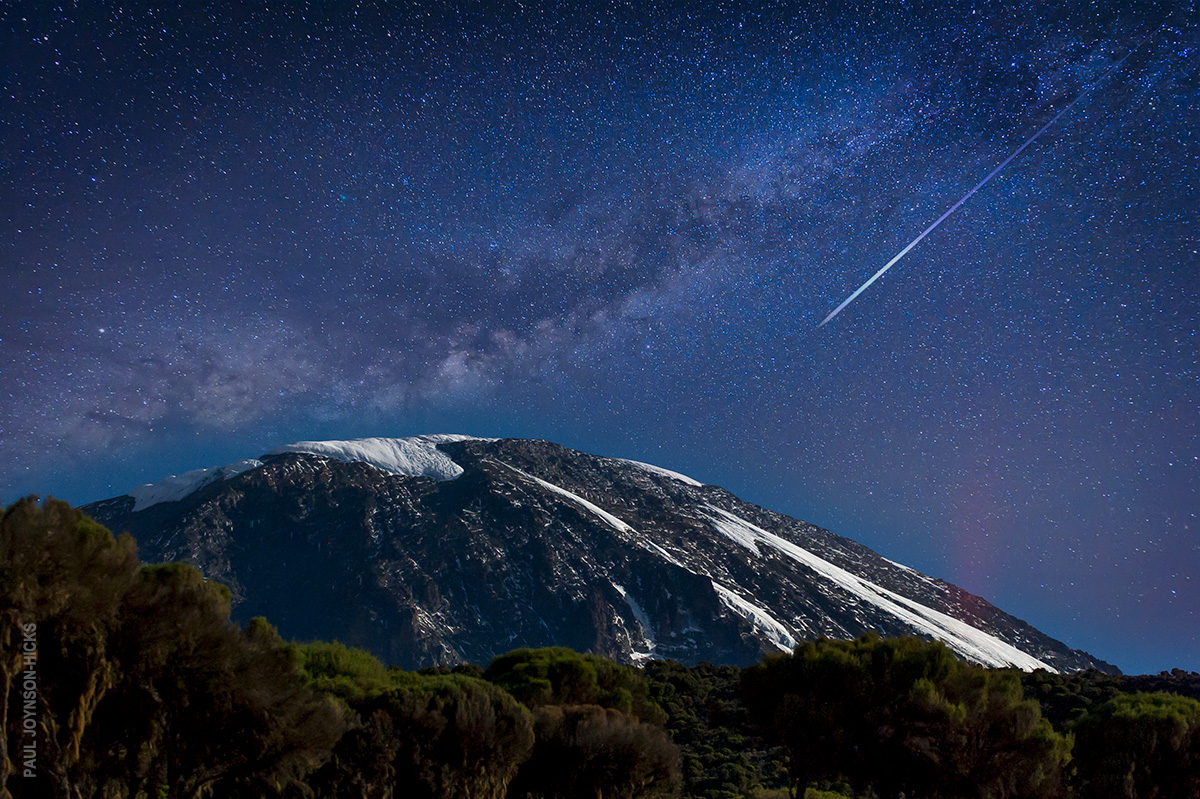
Two of my favorite moments occurred when I left my tent to appreciate where I was. The first was the morning at Karanga camp. The clouds cleared, and I could make out the tiny dots of villages at the foot of the mountain. A plane was flying just above them, maybe 1,000 feet below where I was standing. It’s a sight I won’t ever forget.
The second happened at night at Barafu camp, which is 15,000 feet above a town called Moshi. The lights of the town below created a really stunning mirror effect with the stars in the sky. I’m a sucker for stargazing, and I spent a good few minutes taking in the view despite the cold.
13. Learn a Little Swahili
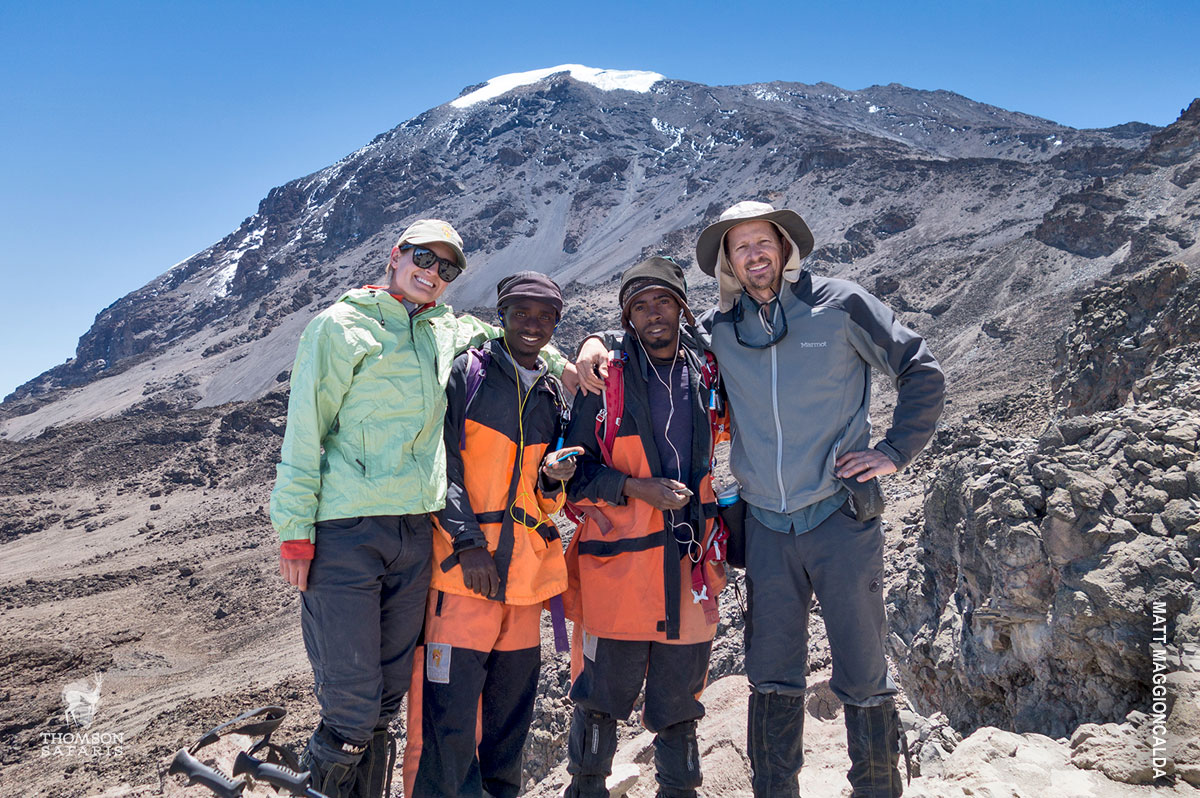
I spoke with my guides about everything from Tanzania politics to Kilimanjaro plant life. They also taught me a few Swahili phrases that I loved to use with the rest of the team, who often don’t have a solid grasp of the English language.
- Chakula kitamu – Tasty food
- Kazi nzuri – Good work
- Asante sana – Thank you
- Lala salama – Sleep well
- Twende – Let’s go
I had a personal favorite. “Jambo” is Swahili for “hello.” “Mambo” is more of a slang greeting essentially meaning “how are you?” The typical response is “poa” or “nzuri” for “cool” or “good.” One of my guides taught me a longer response: “poa kichizi kama ndizi ndani ya friji” or, roughly, “cool and crisp like a banana in the fridge.” It always got a smile and a laugh in return.
14. Let the People Inspire You
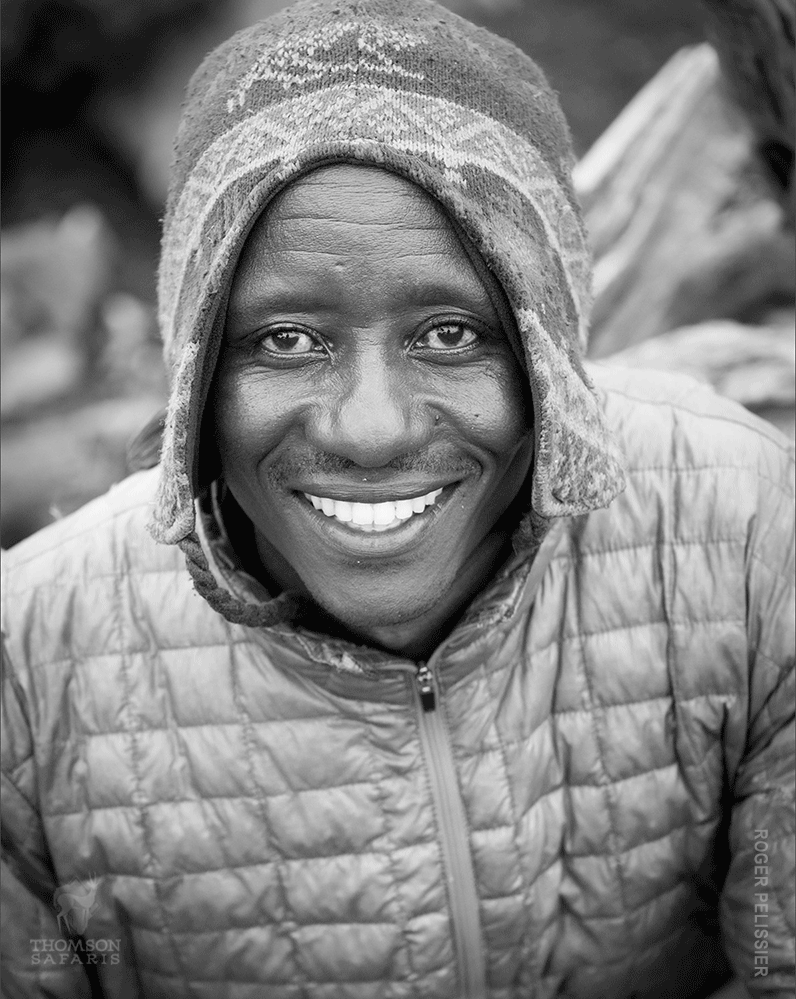
And a little Swahili can help you learn a lot about the people, who are kind, hardworking and inspiring beyond belief.
There’s a challenging portion of the trek that starts with the Barranco Wall, an 800-foot cliff face that requires a lot of scrambling and energy, and continues with a steep descent and then ascent through a valley just before Karanga camp. Our porters ran ahead to set up camp and then came back down into the valley to help us with our daypacks.
Our cook trekked up from 15,000 feet to about 17,000 feet just to serve lunch. Then, he helped carry a trekker from a different outfit down the mountain when she was having trouble breathing.
You spend a lot of time next to this incredible team of people managing a trek up the continent’s highest peak, and you see them scaling cliffs for reception to call their families or hear how they use their income to send their children to private school.
Reading about their grit beforehand is one thing. Meeting them and learning about their lives gives you a new, deep appreciation for the work they do. Don’t be surprised if it becomes the most impactful part of your experience.

